E-readers are now the go-to option for book lovers who want a more convenient and portable reading experience. These devices weed out the need to carry heavy hard covers or wait for the next book in a series to arrive via mail.
E-readers like Kobo and Kindle offer instant access to thousands of titles but vary in design, usability, library access, features, and more. This comparison will help any professional buyer find a balance between features and value when scouting for e-readers to stock in 2025.
Table of Contents
Kobo vs. Kindle at a glance
Hardware comparison
Software and user experience
Ebook formats and compatibility
Digital ecosystem and content availability
Conclusion
Kobo vs. Kindle at a glance

Japanese giant Rakuten bought Canadian company Kobo. Kobo devices’ file format versatility is nice, as they support formats like EPUB, PDF, and more. This is ideal for an extensive digital collection or receiving books from numerous sources.
Amazon, on the other hand, created Kindle. Due to its extended market, Amazon’s presence is significant, especially in the US. Kindle’s strength is its integration with the Amazon ecosystem. However, it supports fewer file types.
What’s more interesting is how these devices’ popularity varies by area. Kindles are popular in the US, while Kobo devices are more common in Canada, Europe, and Asia.
Kobo is well-liked since it features books from multiple sources. The ultimate option depends on a buyer’s priorities. For those looking for broader book alternatives, Kobo may be best. Kindle is good for a simple experience and suitable for buyers looking to stick with Amazon’s offerings.
Hardware comparison

Both brands offer many models, but their designs, screen technology, battery life, and storage are significantly different.
Design and build quality
Both the Kobo and the Kindle e-readers prioritize mobility and user comfort; however, they vary slightly in design and build quality. Asymmetrical designs with page-turn buttons on one side provide a comfortable hold for one-handed reading on Kobo devices like the Kobo Sage and Kobo Libra 2.
In addition, Kobo offers water-resistant models like the Clara BW, allowing users to read while swimming or relaxing in the bath.
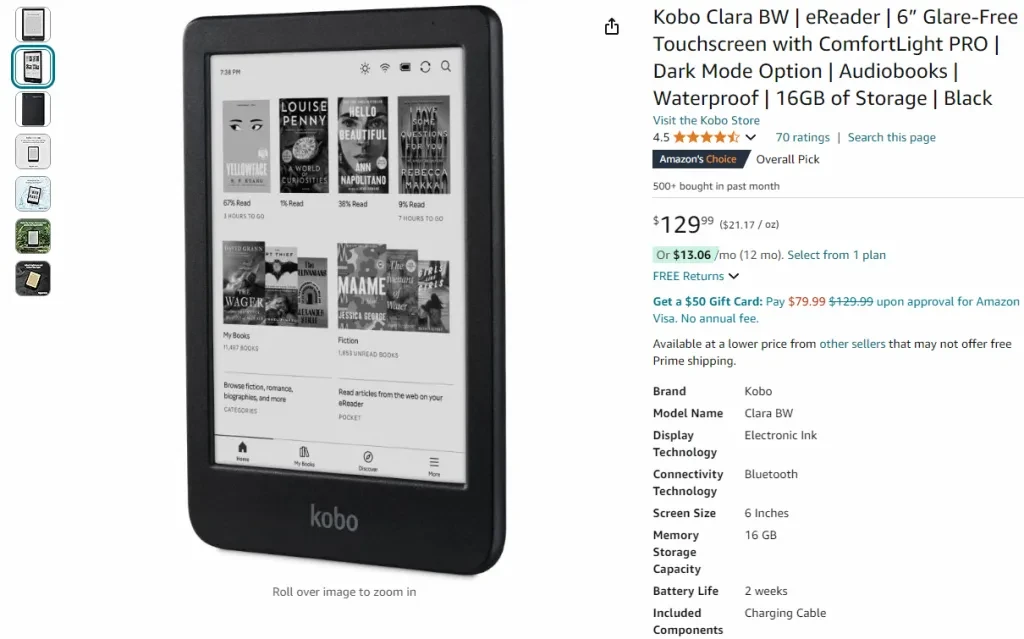
The Kindle Oasis’s asymmetrical shape and page-turn buttons are reminiscent of the Kindle Paperwhite, adding to the minimalist aesthetic that has become synonymous with Kindle.
With their aluminum and glass finishes, Kindle devices tend to have a somewhat more expensive feel, though both manufacturers’ builds are durable.
Screen display and technology
The E Ink displays used by the Kindle and Kobo make reading a breeze, regardless of the light level. For instance, the Kobo Forma has an 8-inch screen, while the Paperwhite and Oasis from Kindle typically have 6 to 7 inches.
While both companies provide customizable illumination for nighttime reading, Kobo’s ComfortLight PRO significantly mitigates blue light emissions. A comparable function is available on Kindle, but only on the more expensive Oasis model.
Battery life
The Kobo and the Kindle have remarkable battery lives, frequently lasting for weeks on a single charge. Popular Kindle models like the Oasis and Paperwhite have a six-week battery life when used moderately (when turned off from Wi-Fi).
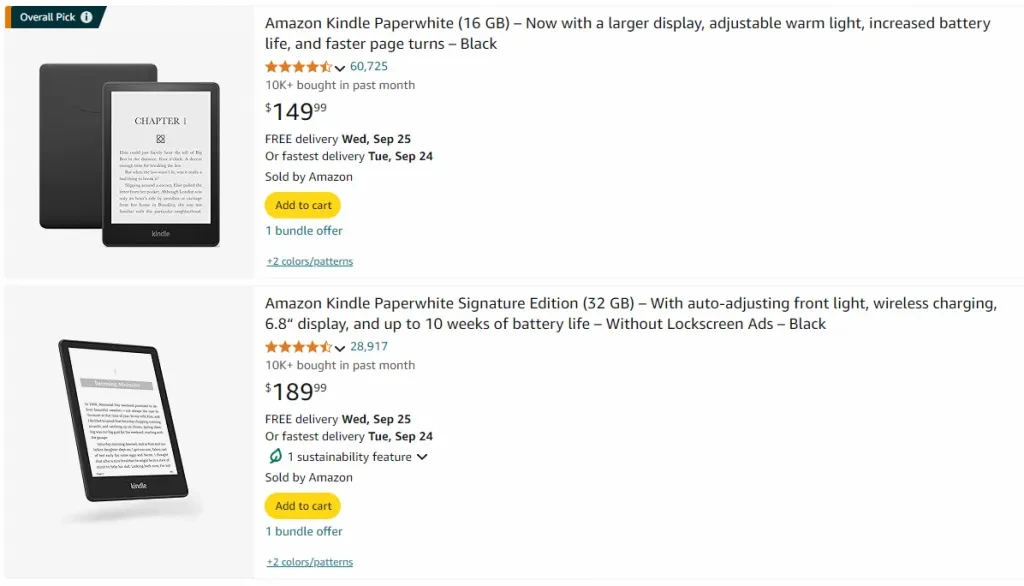
Storage options
Both the Kobo and the Kindle shine in terms of storage capacity. With 8 GB of storage, most models from both brands can accommodate thousands of books.
For buyers looking to save huge files, like audiobooks, Kobo has its users covered with 32GB models in a few of their devices. For those who enjoy audiobooks and want to use Audible, the Kindle offers two storage options: 8GB and 32 GB.
Software and user experience

The software and user experience of these e-readers are essential in determining how fun they are when comparing Kindle vs Kobo. Here’s how they compare:
Operating system and interface
Giving the reader options is a critical strategy of Kobo. On its simple and straightforward home screen, the reader gets some statistics about their reading habits and gets recommendations for books they might enjoy.
Kobo supports a wide variety of file formats, one of which is EPUB—a very popular format—which is a huge plus. Professional buyers can now shop for books at more than one store. Conversely, Kindle is notably associated with Amazon.
Users are instantly immersed in Amazon’s vast book collection the moment they power on Kindle. Purchasing new books or using Amazon Reading services is a breeze. On the negative side? It could be strenuous to convert EPUB files before using them with Kindle.
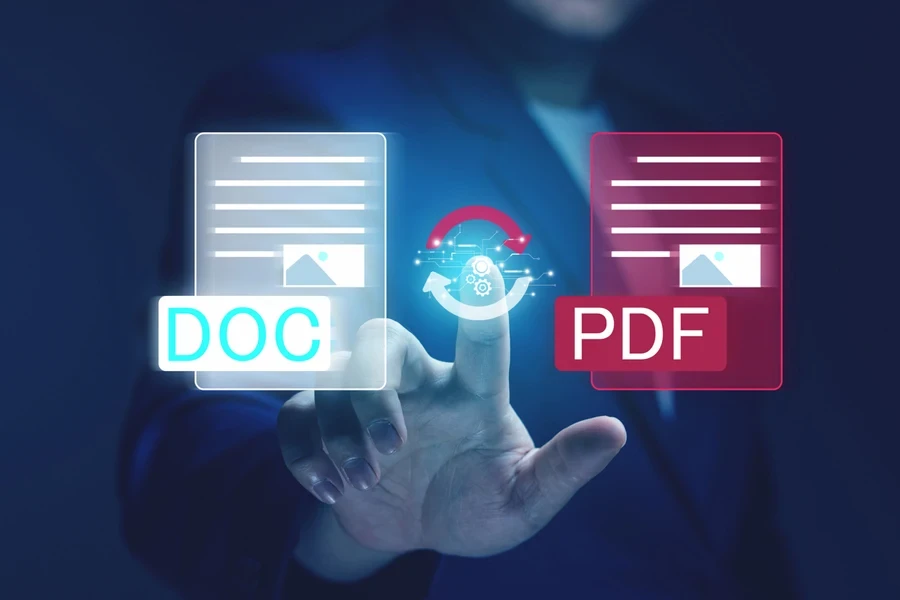
Customization and personalization
Potential buyers will likely enjoy Kobo if they love fine-tuning things until they are perfect. The font, size, and even the width of the margins are only a few of the many customizable aspects of a book’s appearance. Kobo also provides valuable insights for readers who prefer keeping tabs on their reading progress.
While Kobo offers many customization options, Kindle has options for tweaking only a few things, such as font size and type.
Whispersync is a really useful function on the Kindle. It syncs the reading progress across all of the devices a reader owns, so they can easily switch between their phone and e-reader.

Performance and responsiveness
While both the Kobo and Kindle are functional, the Kindle is often faster. On more recent models, such as the Oasis and Paperwhite, the page-turning, book opening, and navigating menus seem much smoother.
Even though Kobo devices are still great, they may seem a little sluggish at times, particularly when dealing with larger files. One thing to keep in mind is that Kobo excels at being versatile. It supports a wider range of file kinds, allowing users to create a more personalized experience.
Ebook formats and compatibility
Users may find that one of the two ebook readers, Kobo or Kindle, is more suited to their reading preferences due to their distinct formats and levels of compatibility.
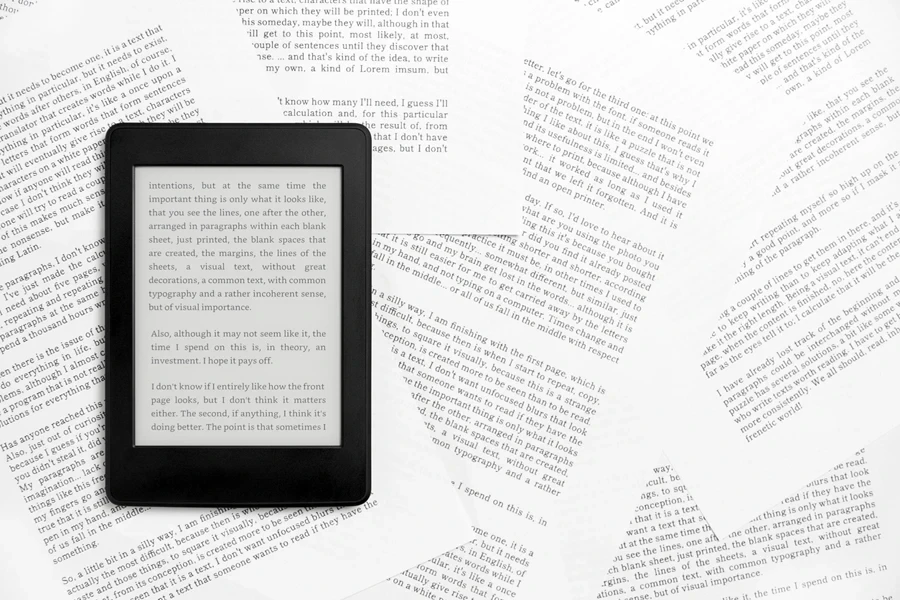
Supported book formats
A more accessible platform is Kobo. Comic book formats like CBZ are among the several that it can read. Other supported file types include EPUB, PDF, MOBI, and many more.
Readers who want to purchase their ebooks from various places, such as libraries and independent bookstores, will find this a good option.
Kindle, in contrast, is only compatible with Amazon’s proprietary formats (such as AZW and MOBI) and does not automatically support EPUB. To get EPUB files to work with Kindle, users need a converter like Calibre.
DRM and file management
The ebooks to buy on Kobo and Kindle are protected by Digital Rights Management (DRM), but Kobo gives a little more leeway. Readers have a little more leverage while managing their library because sideloading stuff is easier.
Because of its tight relationship with Amazon, Kindle forces customers to stay within the Amazon ecosystem unless they go to great lengths to convert their files.

Third-party content compatibility
On all things third-party content, Kobo truly excels. Local library ebooks are now easily accessible on smartphones, thanks to native support for OverDrive.
The Kindle does have some library borrowing capabilities, but it’s not as feature-rich or user-friendly in many countries. Go with Kobo for easy access to content from third parties. Connectivity to Amazon’s vast content collection and services, such as Kindle Unlimited, is the Kindle’s greatest strength.
Digital ecosystem and content availability
While both devices offer a wealth of material, their approaches to ebooks, subscriptions, and other media are significantly different.
Kobo store vs. Kindle store
Among Amazon’s most formidable assets is the Kindle Store, which boasts an extensive ebook library that includes both popular and independent novels, as well as Kindle-exclusive titles. Buying and downloading books is a breeze with the store incorporated directly into the Kindle devices.
With millions of titles available, Kobo’s shop is equally amazing, albeit it caters primarily to international markets. Kobo is the superior option for readers all around the world because of the greater variety of regional and foreign language content it offers.

Subscription services
Kindle Unlimited is the company’s flagship subscription service; for USD 9.99 a month, users get access to more than a million ebooks, audiobooks, and periodicals. It’s worth noting that Kindle Unlimited does not include all books accessible in the Kindle Store.
A comparable service, Kobo Plus, is available from Kobo; however, the selection of titles is limited. When compared to Kindle Unlimited, the number of countries where Kobo Plus is available is far lower.
Availability of audiobooks and other media
Although they approach audiobooks in different ways, both the Kobo and Kindle support them. can easily go from reading to listening on r Kindle thanks to its seamless integration with Audible, Amazon’s audiobook program.
Professional buyers can also find audiobooks on Kobo; however, their selection isn’t quite as big as that of Audible. While Kobo is primarily focused on reading, Kindle has a wider variety of material available, including audiobooks, newspapers, and magazines.
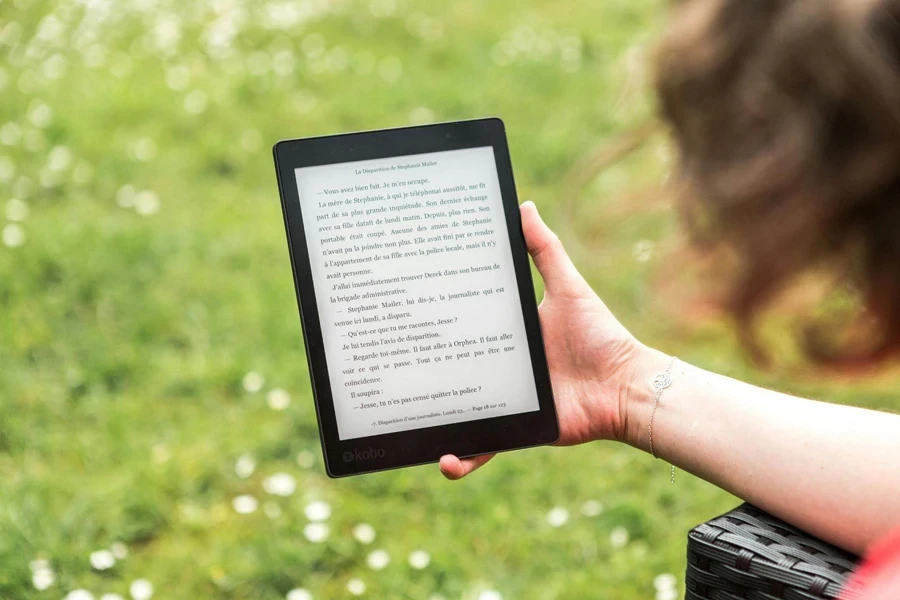
Bottomline
A buyer’s reading habits and preferences determine whether to use Kobo or Kindle. Open format compatibility and foreign content make Kobo great for readers seeking freedom and variety.
Kindle’s tight integration into Amazon’s ecosystem and huge content catalog makes it ideal for consumers who value ease and seamless access to a wide range of media, including Audible audiobooks. For exclusive Kobo and Kindle discounts, browse Alibaba.com for a broad selection at low prices.




